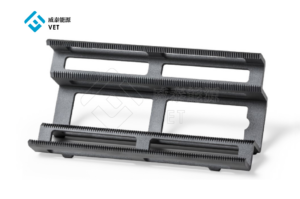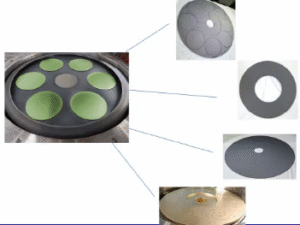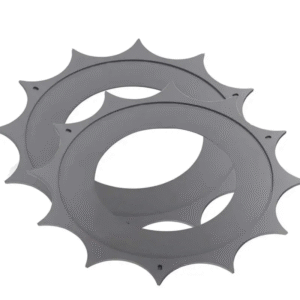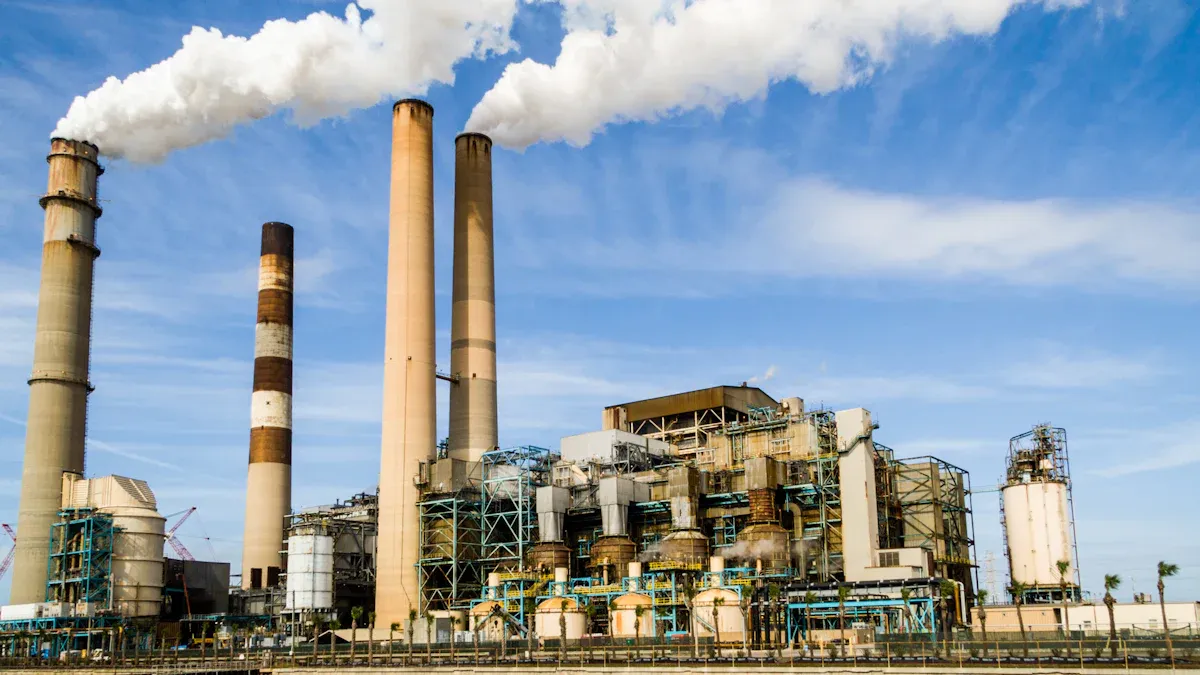
Contamination within vacuum chambers can significantly disrupt system performance and compromise reliability. Particles, residues, and chemical reactions inside these chambers can degrade essential components, resulting in expensive maintenance and operational downtime. Ultra-dense TaC Coatings provide exceptional protection by forming an impermeable barrier that effectively prevents contamination. With unparalleled density, chemical inertness, and high-temperature stability, these coatings ensure peak performance even in the most challenging environments. Industries such as semiconductor manufacturing, research laboratories, and aerospace depend on these advanced coatings to protect critical components like EPI susceptors and improve operational efficiency. Cutting-edge solutions, including CVD TaC Coating, TAC Coating, SIC COATING, and CVD SIC COATING, further enhance durability and resistance to contamination, making them indispensable for high-performance applications.
Key Takeaways
- Ultra-dense TaC coatings create a strong shield that blocks contamination, keeping vacuum systems working properly.
- These coatings lower gas release, making vacuums more stable and reliable, which is very important for making semiconductors and doing research.
- TaC coatings are very tough and can handle high heat, helping vacuum parts last longer and cutting down on repair costs.
- Industries like aerospace and semiconductor production use TaC coatings to work better and protect important parts from tough conditions.
- Ningbo VET Energy Technology Co., Ltd is a leader in TaC coatings, offering custom solutions to fit different industry needs for the best results.
Challenges of Contamination in Vacuum Systems
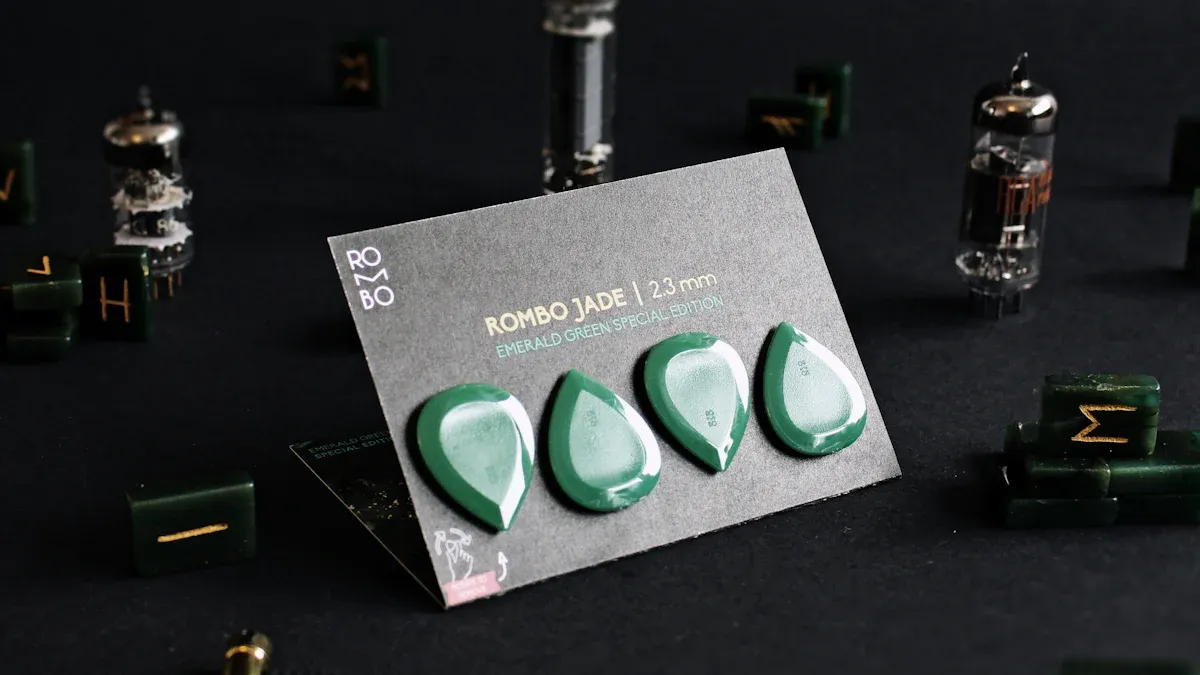
Sources of Contamination in Vacuum Chambers
Vacuum chambers face contamination from a variety of sources, which can compromise their functionality. Common physical contaminants include imbedded and surface water, surface particulates, volatile organics, hydrocarbons, and outgassing from materials. These contaminants often originate from the materials used in the chamber’s construction or from external environmental factors. For instance, outgassing occurs when materials release trapped gases under vacuum conditions, introducing unwanted particles and chemicals into the system. Such contamination can accumulate over time, leading to significant operational challenges.
Impacts of Contamination on System Performance
Contamination directly affects the efficiency and reliability of vacuum systems. Studies reveal that contamination can lead to performance inflation, particularly when both the source and target components are affected. For example, uniform contamination has the most significant impact on system performance, often resulting in overestimated operational metrics. The table below highlights key performance metrics affected by contamination:
| Metric | Description |
|---|---|
| Performance Inflation | Contaminating both source and target text leads to substantial inflation. |
| Impact of Contamination | Uniform contamination has the biggest effect on performance. |
| Model Size Effect | Larger models benefit more from contamination. |
| Language Representation | Contamination requires sufficient language representation to have an effect. |
| Performance Overestimation | Contaminating paired instances inflates performance across languages. |
These impacts underscore the importance of minimizing contamination to maintain system integrity and ensure accurate performance metrics.
Limitations of Traditional Coatings in Addressing Contamination
Traditional coatings often fail to provide long-term protection against contamination in vacuum systems. Comparative analyses show that these coatings degrade significantly over time, requiring frequent maintenance. For example, coatings typically require spot repairs or complete recoating after 5-10% degradation. Additionally, high-durability coatings rarely last beyond 25 years without intervention. Common failure modes include UV exposure, which leads to chalking and gloss loss within 5-10 years, as well as mechanical damage and underfilm corrosion. These limitations highlight the need for advanced solutions like TaC Coatings, which offer superior durability and resistance to contamination.
Properties of Ultra-Dense TaC Coatings
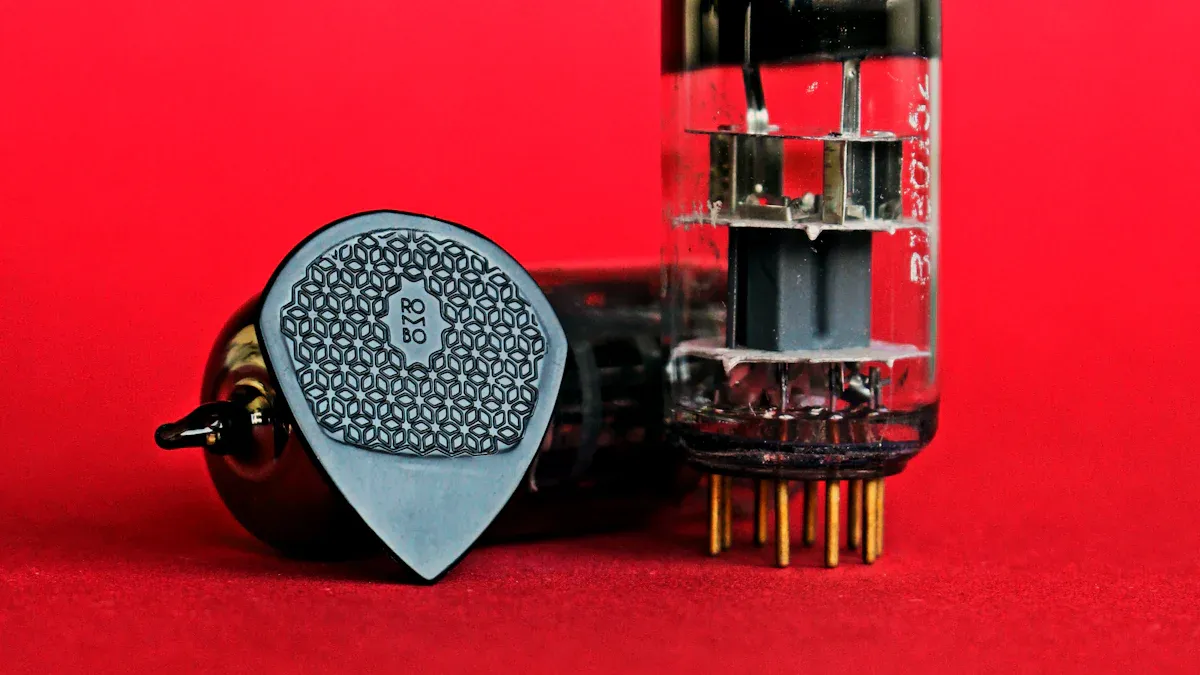
Density and Its Role in Contamination Prevention
The density of ultra-dense TaC coatings plays a pivotal role in preventing contamination within vacuum systems. These coatings exhibit a tightly packed atomic structure, which minimizes the presence of micropores and voids. This characteristic creates an impermeable barrier that prevents contaminants, such as gases and particulates, from penetrating the surface. The result is a significant reduction in outgassing and impurity introduction, ensuring a cleaner and more stable vacuum environment.
Peer-reviewed research highlights the exceptional physical properties of TaC coatings, which contribute to their superior density. The table below outlines key technical data:
| Property | Value |
|---|---|
| Young’s Modulus | Higher than TiC, lower than NbC |
| Bulk Modulus | Higher than TiC, lower than NbC |
| Melting Temperature | 4399 K |
| Elastic Anisotropy | Moderate |
| Vickers Hardness | High |
| Debye Temperature | High |
These properties underscore the robustness of TaC coatings, making them an ideal choice for contamination prevention in critical environments.
Chemical Inertness and Corrosion Resistance
TaC coatings demonstrate remarkable chemical inertness, which enhances their ability to resist corrosion in harsh environments. Their stability in the presence of reactive gases, such as ammonia and hydrogen, makes them particularly suitable for applications like blue GaN MOCVD processes. Unlike traditional coatings, TaC coatings maintain their integrity under these conditions, preventing the introduction of impurities into the system.
Technical findings reveal that TaC coatings exhibit a significantly slower corrosion rate compared to SiC coatings. This advantage ensures compatibility with high-temperature processes while preserving the quality of materials and components. Additionally, TaC-coated graphite materials produce cleaner crystals with fewer impurities, such as carbon, oxygen, and nitrogen. The table below summarizes these findings:
| Evidence Description | Key Findings |
|---|---|
| Corrosion Resistance | TaC’s corrosion rate is significantly slower than SiC in high-temperature ammonia and hydrogen environments. |
| Crystal Quality | TaC-coated graphite materials lead to cleaner crystals with fewer impurities, minimized edge defects, and reduced micropore and etch pit densities. |
This combination of chemical inertness and corrosion resistance ensures that TaC coatings provide long-term protection and reliability in demanding applications.
High-Temperature Stability and Durability
High-temperature stability is another defining feature of ultra-dense TaC coatings. With a melting temperature of 4399 K, these coatings can withstand extreme thermal conditions without degrading. This property is critical for industries like semiconductor manufacturing, where components are exposed to intense heat during processes such as epitaxial growth.
The durability of TaC coatings extends their lifespan, reducing the need for frequent maintenance or replacement. Their ability to resist thermal cycling and mechanical stress ensures consistent performance over time. This makes them a cost-effective solution for protecting vacuum chamber components in high-performance environments.
By combining high-temperature stability with exceptional durability, TaC coatings provide unmatched protection for critical systems, ensuring operational efficiency and reliability.
Applications of TaC Coatings in Critical Environments
Semiconductor Manufacturing and Cleanroom Applications
Semiconductor manufacturing demands an environment free from contamination to ensure the production of high-quality devices. TaC coatings play a vital role in maintaining the cleanliness of vacuum chambers used in processes like epitaxial growth and chemical vapor deposition. Their ultra-dense structure prevents outgassing and particle release, which are critical for achieving the precision required in semiconductor fabrication.
In cleanroom applications, TaC coatings protect components such as susceptors and wafer carriers from chemical reactions and thermal degradation. These coatings also enhance the durability of equipment exposed to extreme temperatures and reactive gases. By minimizing contamination risks, they contribute to higher yields and improved device performance, making them indispensable in this industry.
Research Laboratories and Ultra-High Vacuum Systems
Research laboratories rely on ultra-high vacuum systems to conduct experiments that require precise control over environmental conditions. TaC coatings provide an effective solution for maintaining the integrity of these systems. Their chemical inertness ensures compatibility with a wide range of experimental setups, including those involving reactive gases or high-energy particles.
The high-temperature stability of TaC coatings allows them to withstand the intense thermal conditions often encountered in advanced research applications. For instance, they protect critical components in particle accelerators and fusion reactors, where extreme heat and corrosive environments are common. By ensuring a stable and uncontaminated vacuum, TaC coatings enable researchers to achieve accurate and reproducible results.
Aerospace and Other High-Performance Industries
Aerospace applications demand materials that can endure extreme conditions, including high temperatures, mechanical stress, and abrasive wear. TaC coatings enhance the performance and durability of critical components such as engine parts and thermal shields. Their ability to resist oxidation and corrosion ensures reliable operation even in the harshest environments.
Industry reports highlight the significant benefits of TaC coatings in aerospace applications. For example, the table below summarizes findings from recent analyses:
| Source | Findings |
|---|---|
| TaC Coating Future-Proofing Growth: Strategic Insights and Analysis 2025-2033 | TaC coatings enhance durability and performance in aerospace applications, particularly in high-stress parts and engine components. |
| TaC Coating Market Size, Share, Growth and Industry Analysis | TaC coatings improve endurance and efficiency of engine parts, providing protection against high temperatures and abrasive wear, thus enhancing aircraft safety in challenging conditions. |
Beyond aerospace, TaC coatings find applications in other high-performance industries such as nuclear energy and defense. Their unique properties make them a preferred choice for protecting equipment that operates under extreme conditions, ensuring safety and reliability.
Benefits of Ultra-Dense TaC Coatings
Reduced Outgassing and Enhanced Vacuum Integrity
Ultra-dense TaC coatings significantly reduce outgassing, a common issue in vacuum systems. Their tightly packed atomic structure minimizes micropores, which are primary sources of gas release. This reduction in outgassing ensures a stable vacuum environment, critical for processes like semiconductor manufacturing and ultra-high vacuum experiments. By creating an impermeable barrier, these coatings prevent the infiltration of contaminants, enhancing the overall integrity of the vacuum system. Industries relying on precise environmental control benefit greatly from this feature, as it ensures consistent performance and reliability.
Extended Component Lifespan and Durability
TaC coatings extend the lifespan of vacuum chamber components by providing exceptional durability. Their high melting point and resistance to thermal cycling protect components from wear and degradation in extreme conditions. The use of gradient cemented carbides as substrates further enhances this durability. These substrates prevent crack propagation, while the gradient zone formation maintains the coating’s integrity. This combination ensures that components remain functional for extended periods, reducing the need for frequent replacements. In vacuum systems, this durability translates to improved operational efficiency and reduced downtime.
Cost Savings Through Reduced Maintenance and Downtime
The long-lasting nature of TaC coatings leads to significant cost savings. Their ability to withstand harsh environments reduces the frequency of maintenance and component replacement. This durability minimizes operational interruptions, allowing industries to maintain productivity. Additionally, the enhanced protection provided by these coatings reduces the risk of contamination-related failures, which can be costly to address. Over time, the investment in TaC coatings proves cost-effective, making them a preferred choice for high-performance applications.
Company Expertise in TaC Coatings
Ningbo VET Energy Technology Co., Ltd’s Role in Advancing TaC Coating Solutions
Ningbo VET Energy Technology Co., Ltd has established itself as a leader in the development and application of advanced TaC Coatings. The company leverages cutting-edge chemical vapor deposition (CVD) techniques to produce ultra-dense coatings that meet the stringent demands of industries like semiconductor manufacturing and aerospace. By combining technical expertise with state-of-the-art facilities, Ningbo VET Energy Technology Co., Ltd ensures that its coatings deliver unmatched performance in contamination prevention, thermal stability, and durability.
The company’s focus on innovation has led to the creation of customized solutions tailored to specific industry needs. For example, its TaC-coated graphite materials have become a preferred choice for MOCVD processes, where high-temperature stability and chemical inertness are critical. This adaptability underscores the company’s commitment to advancing coating technologies for critical environments.
Commitment to Quality and Innovation in Vacuum Chamber Protection
Ningbo VET Energy Technology Co., Ltd prioritizes quality and innovation in every aspect of its operations. The company adheres to rigorous quality control standards, ensuring that each coating meets or exceeds industry benchmarks. Customer testimonials highlight this dedication:
- Edward Mathews: “Been using Promarks for years! They are the absolute best, wouldn’t think about using another company! The quality of their vacuum seal bags is unmatched. Customer service is amazing!”
- Chris Moyers: “Rick Hurd is extremely knowledgeable about my equipment and machinery, and he has always been accessible for troubleshooting and support. Top notch company!”
These endorsements reflect the company’s unwavering commitment to delivering reliable and innovative solutions for vacuum chamber protection. By fostering a culture of excellence, Ningbo VET Energy Technology Co., Ltd continues to set new standards in the industry.
Industry Partnerships and Applications
Collaborations with leading organizations further enhance the company’s impact. Ningbo VET Energy Technology Co., Ltd partners with research institutions, semiconductor manufacturers, and aerospace firms to develop and implement advanced TaC Coatings. These partnerships enable the company to stay at the forefront of technological advancements while addressing the evolving needs of its clients.
For instance, the company’s coatings have been successfully applied in ultra-high vacuum systems, epitaxial growth chambers, and aerospace engine components. These applications demonstrate the versatility and reliability of its solutions, solidifying its reputation as a trusted provider of high-performance coatings.
TaC Coatings effectively tackle contamination challenges in vacuum systems by leveraging their unique properties, such as chemical inertness and high-temperature stability. Their role in industries like semiconductor manufacturing and aerospace ensures reliable system performance and prolonged component lifespan. Ningbo VET Energy Technology Co., Ltd continues to lead the way in delivering advanced TaC coating solutions. By combining innovation with industry expertise, the company supports critical environments with unmatched protection and efficiency.
FAQ
What makes TaC coatings superior to traditional coatings?
TaC coatings offer unmatched density, chemical inertness, and high-temperature stability. These properties prevent contamination, reduce outgassing, and enhance durability. Unlike traditional coatings, TaC coatings maintain their integrity under extreme conditions, ensuring long-term protection for vacuum chamber components.
Can TaC coatings be customized for specific applications?
Yes, TaC coatings can be tailored to meet unique industry requirements. Ningbo VET Energy Technology Co., Ltd specializes in creating customized solutions for semiconductor manufacturing, aerospace, and research laboratories, ensuring optimal performance and reliability in critical environments.
How do TaC coatings improve vacuum system performance?
TaC coatings minimize contamination by forming an impermeable barrier that prevents outgassing and particle infiltration. This ensures a stable vacuum environment, which is essential for processes like epitaxial growth and ultra-high vacuum experiments.
Are TaC coatings suitable for high-temperature applications?
TaC coatings excel in high-temperature environments due to their melting point of 4399 K. They resist thermal cycling and mechanical stress, making them ideal for industries like semiconductor manufacturing and aerospace.
Why choose Ningbo VET Energy Technology Co., Ltd for TaC coatings?
Ningbo VET Energy Technology Co., Ltd combines technical expertise with innovative CVD techniques to deliver ultra-dense TaC coatings. Their commitment to quality and industry partnerships ensures reliable solutions for contamination prevention and vacuum chamber protection.


